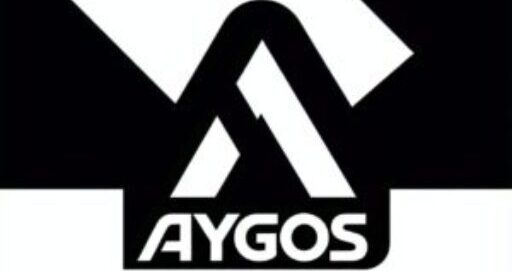One of the biggest challenges for handmade business owners is setting the right price for their products. Price too low, and you barely make a profit. Price too high, and you struggle to attract customers. The key is finding a balance that reflects the value of your work, covers costs, and ensures profitability.
In this guide, you’ll learn how to calculate product prices, understand pricing strategies, and maximize your earnings.
1. Understand the Importance of Pricing
Setting the right price is crucial for your business because:
✔ It covers materials and labor costs.
✔ It ensures your business remains profitable.
✔ It reflects the quality and uniqueness of your handmade work.
✔ It helps you compete in the market without undervaluing your brand.
Example:
A handmade ceramic mug priced at $15 when competitors charge $40 may make buyers question the quality.
2. Calculate the Cost of Production
Before setting a price, you need to determine how much each product costs to make.
2.1 Direct Costs (Materials & Labor)
✔ Materials – Fabric, beads, wax, wood, metals, packaging.
✔ Labor – The time you spend making the product (pay yourself a fair hourly rate).
2.2 Overhead Costs (Business Expenses)
✔ Rent, electricity, tools, website fees, marketing, shipping supplies.
✔ Software & business services (e.g., Etsy, Shopify fees).
Example Calculation:
- Materials: $5
- Labor (1 hour @ $20/hour): $20
- Overhead Costs (for one product): $3
- Total Cost: $28
3. Use a Profitable Pricing Formula
Once you calculate your costs, you can set a price that ensures profitability.
3.1 Handmade Pricing Formula
Retail Price=(Materials+Labor+Overhead)×Markup\text{Retail Price} = (\text{Materials} + \text{Labor} + \text{Overhead}) \times \text{Markup}Retail Price=(Materials+Labor+Overhead)×Markup Wholesale Price=Retail Price×0.5\text{Wholesale Price} = \text{Retail Price} \times 0.5Wholesale Price=Retail Price×0.5
Example Pricing Calculation:
- Materials + Labor + Overhead: $28
- Markup (2x or 2.5x for profit):
- Retail Price = $28 × 2.5 = $70
- Wholesale Price = $70 × 0.5 = $35
Tip: Many handmade sellers use a 2x-3x markup to cover costs and profit.
4. Consider Market Research & Competitor Pricing
4.1 Research Competitor Prices
- Look at similar products on Etsy, Amazon Handmade, and independent shops.
- Check high-end and budget-friendly competitors to position yourself correctly.
4.2 Compare Pricing Strategies
✔ Premium Pricing – High-quality, unique products with luxury branding.
✔ Mid-Range Pricing – Affordable but still profitable for regular buyers.
✔ Budget Pricing – Lower margins but higher sales volume.
Example:
A handmade leather wallet selling for $30 when competitors charge $90 may be undervaluing the product.
5. Factor in Wholesale and Bulk Pricing
Selling wholesale allows you to sell in larger volumes at a lower price per unit.
5.1 Wholesale Pricing Strategy
Wholesale Price=(Materials+Labor+Overhead)×2\text{Wholesale Price} = (\text{Materials} + \text{Labor} + \text{Overhead}) \times 2Wholesale Price=(Materials+Labor+Overhead)×2 Retail Price=Wholesale Price×2\text{Retail Price} = \text{Wholesale Price} \times 2Retail Price=Wholesale Price×2
5.2 Offer Bulk Discounts
- Buy 5+ products = 10% discount
- Buy 10+ products = 20% discount
Example:
A handmade jewelry maker sells earrings for $50 retail, but offers them to boutiques at $25 wholesale.
6. Adjust Prices Based on Demand and Perceived Value
6.1 Increase Prices for Unique or Custom Items
- Custom Engraving or Personalization = Higher price.
- Limited Edition Handmade Collections = Premium pricing.
6.2 Offer Different Pricing Tiers
✔ Budget Option ($20) – Smaller items or basic versions.
✔ Mid-Range Option ($50) – Regular product line.
✔ Luxury Option ($100+) – Custom, detailed, or unique designs.
Example:
A handmade candle business could offer:
- $10 Small Candles
- $40 Large Scented Candles
- $80 Custom, Engraved Candles
7. Consider Psychological Pricing Strategies
7.1 Charm Pricing
- Instead of $50, price at $49.99 to make it feel more affordable.
7.2 Bundle Pricing
- “Buy 3, Get 10% Off” encourages larger purchases.
7.3 Anchor Pricing
- Show original price ($80) crossed out, sale price ($60) to make it seem like a great deal.
Example:
A handmade planner business could offer a “Complete Productivity Set” bundle instead of selling individual items.
8. Account for Fees, Taxes, and Shipping
8.1 Etsy, Shopify, and Marketplace Fees
- Etsy: 6.5% transaction fee + $0.20 listing fee.
- Shopify: 2.9% + $0.30 per transaction.
8.2 Shipping Costs
- Offer flat-rate shipping or include shipping in the product price.
- Use calculated shipping rates for heavier products.
Example:
A handmade pottery shop could increase product prices slightly to offer “Free Shipping.”
9. Test and Adjust Your Pricing Over Time
9.1 Monitor Sales Performance
- If items sell out quickly, increase the price slightly.
- If sales are slow, test limited-time discounts.
9.2 Use Customer Feedback
- Ask loyal customers if they’d pay more for better packaging or customization.
9.3 Analyze Market Trends
- Adjust pricing for holiday demand, trends, and material costs.
Example:
If a handmade bag sells faster during the holiday season, increase prices by 10-15%.
10. Communicate the Value of Handmade Products
Handmade items deserve premium pricing because they are:
✔ Unique & Customizable
✔ Ethically Made
✔ Higher Quality than Mass-Produced Goods
10.1 Show Behind-the-Scenes Content
- Post videos of the crafting process on Instagram & TikTok.
10.2 Highlight Materials & Sustainability
- Emphasize eco-friendly materials, fair-trade sourcing, or artisan techniques.
10.3 Use Storytelling in Product Descriptions
- Instead of just listing materials, share the inspiration behind the product.
Example:
A handmade macrame business could market their product as:
“Handwoven over 6 hours using ethically sourced cotton—perfect for adding warmth to your space.”
Conclusion: Set Prices That Reflect Your Worth
Pricing your handmade products correctly ensures profitability, fair wages, and long-term success. By factoring in costs, market research, demand, and pricing strategies, you can confidently set prices that attract customers while ensuring sustainable growth.
Start applying these pricing strategies today and watch your handmade business thrive! 🚀✨

